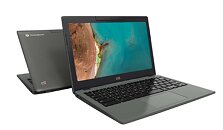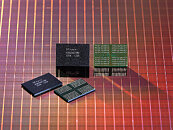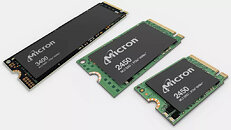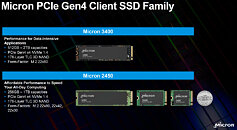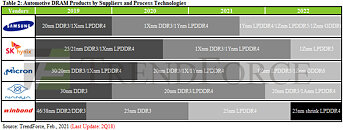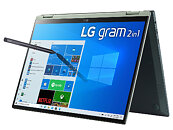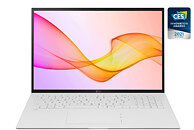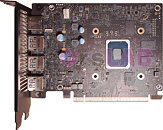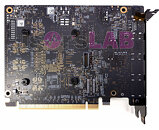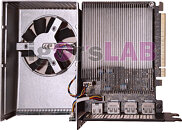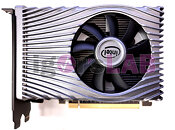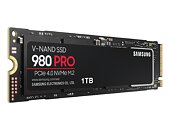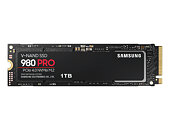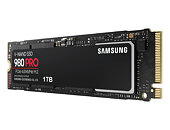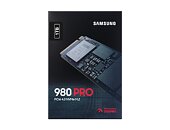Apr 18th, 2025 13:00 EDT
change timezone
Latest GPU Drivers
New Forum Posts
- Place your bets, what node will rtx 6000/RDNA 5(UDNA 1?) use (0)
- RX 9000 series GPU Owners Club (386)
- GPU Pricing and Performance (8)
- ThrottleStop ratio limit changes don't apply anymore (7)
- ASRock X570 TAICHI $182 (0)
- Guess my potato specs (0)
- Looking for 4060 MXM-A VBIOS (5)
- SK hynix A-Die (Overclocking thread) only for RYZEN AM5 users (62)
- Bios RX 570 (23)
- Lian Li O11 Dynamic XL ROG. (21)
Popular Reviews
- ASUS GeForce RTX 5060 Ti TUF OC 16 GB Review
- NVIDIA GeForce RTX 5060 Ti PCI-Express x8 Scaling
- Palit GeForce RTX 5060 Ti Infinity 3 16 GB Review
- G.SKILL Trident Z5 NEO RGB DDR5-6000 32 GB CL26 Review - AMD EXPO
- ASUS GeForce RTX 5060 Ti Prime OC 16 GB Review
- Zotac GeForce RTX 5060 Ti AMP 16 GB Review
- MSI GeForce RTX 5060 Ti Gaming OC 16 GB Review
- Teevolution Terra Pro Review
- MSI GeForce RTX 5060 Ti Gaming Trio OC 16 GB Review
- ASUS GeForce RTX 5080 TUF OC Review
Controversial News Posts
- NVIDIA GeForce RTX 5060 Ti 16 GB SKU Likely Launching at $499, According to Supply Chain Leak (182)
- NVIDIA Sends MSRP Numbers to Partners: GeForce RTX 5060 Ti 8 GB at $379, RTX 5060 Ti 16 GB at $429 (127)
- Nintendo Confirms That Switch 2 Joy-Cons Will Not Utilize Hall Effect Stick Technology (105)
- Over 200,000 Sold Radeon RX 9070 and RX 9070 XT GPUs? AMD Says No Number was Given (100)
- Nintendo Switch 2 Launches June 5 at $449.99 with New Hardware and Games (99)
- NVIDIA Launches GeForce RTX 5060 Series, Beginning with RTX 5060 Ti This Week (97)
- Sony Increases the PS5 Pricing in EMEA and ANZ by Around 25 Percent (85)
- NVIDIA PhysX and Flow Made Fully Open-Source (77)
News Posts matching #LPDDR4
Return to Keyword BrowsingIBASE Releases Low-power Railway Gateway Computer with Intel Atom x6000E Processors
IBASE Technology Inc., a world leading manufacturer of industrial motherboards and embedded computing solutions, is proud to announce its latest intelligent railway gateway computer supporting the new Intel Atom x6000E family processors (codenamed Elkhart Lake). Certified with EU EN45545-2 fire protection and EN50155 standards covering equipment used on rolling stock applications such as Passenger Information System (PIS), surveillance systems and vehicle monitoring systems, the MPT-500R series is built to withstand up to 3 Grms/3~500 Hz vibration resistance and operating temperature of -30°C to +70°C.
The MPT-500R low-power, compact railway gateway system comes with 4 GB/8 GB LPDDR4 3200 memory on board, 64G MLC SSD storage with high reliability, and an option between 24 V and 72/110 V DC input to meet various power requirements. Featuring robust M12 USB, Ethernet and power input connectors, it ensures fail-safe connection and fault-free data transmission suitable for deployments in harsh industrial environments. It has two PoE ports that provide power to IP cameras and runs artificial intelligence identification. Measuring 210 x 138 x 96.8 mm (WxDxH), the unit supports a host of useful connectivity functions including HDMI, RS485, two SIM sockets with 4G/5G WWAN operation, 2280 M.2 M-key for PCI-E SSD and an mPCI-E full/half-size socket.
The MPT-500R low-power, compact railway gateway system comes with 4 GB/8 GB LPDDR4 3200 memory on board, 64G MLC SSD storage with high reliability, and an option between 24 V and 72/110 V DC input to meet various power requirements. Featuring robust M12 USB, Ethernet and power input connectors, it ensures fail-safe connection and fault-free data transmission suitable for deployments in harsh industrial environments. It has two PoE ports that provide power to IP cameras and runs artificial intelligence identification. Measuring 210 x 138 x 96.8 mm (WxDxH), the unit supports a host of useful connectivity functions including HDMI, RS485, two SIM sockets with 4G/5G WWAN operation, 2280 M.2 M-key for PCI-E SSD and an mPCI-E full/half-size socket.

AAEON Unveils the UP Squared V2 Single-Board Computer
AAEON, renowned for its UP Board range, has announced the UP Squared V2, the successor to its UP Squared Developer Board. Providing dramatic improvements in processing power, graphic capability and expansion options on the same 3.37" x 3.54" (85 mm x 90 mm) form factor, the UP Squared V2 is designed to make the development process more efficient.
While still reflecting the competitive pricing of the previous generation, the UP Squared V2 boasts a 40% improvement in CPU performance due to its Intel Celeron N6210 Pentium J6426 Processor SoC (formerly Elkhart Lake). As a product of this, users can take advantage of 1.7x the single-thread performance and 1.5x the multi-thread performance along with up to 16 GB LPDDR4 system memory.
While still reflecting the competitive pricing of the previous generation, the UP Squared V2 boasts a 40% improvement in CPU performance due to its Intel Celeron N6210 Pentium J6426 Processor SoC (formerly Elkhart Lake). As a product of this, users can take advantage of 1.7x the single-thread performance and 1.5x the multi-thread performance along with up to 16 GB LPDDR4 system memory.

AAEON's de next-TGU8 Breaks Through Board Space Limitations in Single Board Computing
In a major breakthrough in single board computing, AAEON introduces the de next-TGU8, the smallest board featuring an on-board Intel Core i-level processor ever created, measuring just 3.31" x 2.17" (84 mm x 55 mm). Offering up to 4 cores, with 8 threads, the 11th Generation Intel Core i7/i5/i3/Celeron Processor (formerly Tiger Lake-UP3) provides the de next-TGU8 with the kind of high-performance power never-before-seen in a board so small.
This power ensures users can utilize the potential of the de next-TGU8's 16 GB onboard LPDDR4x memory and expandability, for which it has an M.2 2280 M-Key (PCIe [x2]) to enable AI acceleration, Wi-Fi, and 4G modules. The de next-TGU8 also provides an FPC slot for PCIe [x4] Gen 3 with Riser kit, for additional storage or more advanced graphics options to go along with its Intel UHD Graphics.
This power ensures users can utilize the potential of the de next-TGU8's 16 GB onboard LPDDR4x memory and expandability, for which it has an M.2 2280 M-Key (PCIe [x2]) to enable AI acceleration, Wi-Fi, and 4G modules. The de next-TGU8 also provides an FPC slot for PCIe [x4] Gen 3 with Riser kit, for additional storage or more advanced graphics options to go along with its Intel UHD Graphics.
CTL Chromebook NL72-L Series Features Updated Cellular Technology
CTL announced today the support of CBRS in the updated NL72L and NL72CT-L. "Digital equity and inclusion is a priority for CTL and we believe by adding additional communication technologies to our products, we are one step closer to solving the digital divide. Band 48 has been requested by our most innovative customers, and are excited to address this need in the market." - Erik Stromquist, CEO
Band 48 CBRS (Citizens Broadband Radio Service), often referred to as the private LTE, is the frequency band of 3.50 GHz, operating in the LTE spectrum in the United States, and is perfect for services that require ultra-high resources. LTE was designed to work across a wide range of frequency bands (450 MHz up to 3.80 GHz) referred to as E-UTRA. The LTE technology is capable of supporting two modes of communication, FDD (Frequency Division Duplex) and TDD (Time Division Duplex).
Band 48 CBRS (Citizens Broadband Radio Service), often referred to as the private LTE, is the frequency band of 3.50 GHz, operating in the LTE spectrum in the United States, and is perfect for services that require ultra-high resources. LTE was designed to work across a wide range of frequency bands (450 MHz up to 3.80 GHz) referred to as E-UTRA. The LTE technology is capable of supporting two modes of communication, FDD (Frequency Division Duplex) and TDD (Time Division Duplex).
LattePanda Team and Global Partners Jointly Launch LattePanda 3 Delta - the Fast and Pocket-sized Single-board Computer
The LattePanda Team launched the world's thinnest pocket-sized hackable computer - LattePanda 3 Delta with global electronic components distributors. The collaboration will ensure that the product choice for LattePanda 3 Delta is passed on to customers through quick, easy online selection via the website of global electronic components distributors and LattePanda.
"LattePanda Team is so proud to cooperate with the global electronic components distributors for this joint launch. It delivers an exciting message to our customers that they can gain fast, easy access to our high-performance and hackable LattePanda 3 Delta anywhere in the world. Our collaboration will assure even higher levels of customer service," said Sandy Zhang, CMO of LattePanda Team.
"LattePanda Team is so proud to cooperate with the global electronic components distributors for this joint launch. It delivers an exciting message to our customers that they can gain fast, easy access to our high-performance and hackable LattePanda 3 Delta anywhere in the world. Our collaboration will assure even higher levels of customer service," said Sandy Zhang, CMO of LattePanda Team.
Historically Low 2023 DRAM Demand Bit Growth at Only 8.3%, NAND Flash Expected to Drive Installed Capacity Growth Due to Falling Prices
According to TrendForce, DRAM market demand bit growth will only amount to 8.3% in 2023, sub-10% for the first time in history, and far lower than supply-side bit growth of approximately 14.1%. Data indicates the DRAM market to be severely oversupplied at least in 2023 and prices may continue to decline. NAND Flash is still in a state of oversupply and, although prices are expected to fall in the first half of next year, NAND Flash has built-in price elasticity compared to DRAM and average prices are expected to stimulate density growth in the enterprise SSD market after declining for several consecutive quarters. Demand bits are expected to grow by 28.9%, while supply bits will grow by approximately 32.1%.
From the perspective of various applications, rising inflation continues to impact demand in consumer markets, so the primary goal of memory brands has been to prioritize inventory correction. Especially in the past two years, a shortage of upstream components caused by the pandemic led memory brands to overbook purchase orders while sluggish sales on the distribution channel side have resulted in slow depletion of current notebook inventory, resulting in a further weakening of notebook demand in 2023. In terms of PC DRAM, the proportion of DDR4 and LPDDR4X in PC applications will fall further while the penetration rate of LPDDR5 and DDR5 continues to rise. However, the price premium of DDR5 will limit the growth of density in PCs. DRAM density in PCs is estimate to increase by approximately 7% annually in 2023. If manufactures cut DDR5 pricing more aggressively next year, installed capacity may be driven up to 9%, depending on whether DDR5 price concessions can be effectively reconciled with DDR4.
From the perspective of various applications, rising inflation continues to impact demand in consumer markets, so the primary goal of memory brands has been to prioritize inventory correction. Especially in the past two years, a shortage of upstream components caused by the pandemic led memory brands to overbook purchase orders while sluggish sales on the distribution channel side have resulted in slow depletion of current notebook inventory, resulting in a further weakening of notebook demand in 2023. In terms of PC DRAM, the proportion of DDR4 and LPDDR4X in PC applications will fall further while the penetration rate of LPDDR5 and DDR5 continues to rise. However, the price premium of DDR5 will limit the growth of density in PCs. DRAM density in PCs is estimate to increase by approximately 7% annually in 2023. If manufactures cut DDR5 pricing more aggressively next year, installed capacity may be driven up to 9%, depending on whether DDR5 price concessions can be effectively reconciled with DDR4.
Winbond's LPDDR4/4X 100BGA achieves JEDEC standard for improved energy conservation and carbon reduction in a smaller package size
Winbond Electronics Corporation, a leading global supplier of semiconductor memory solutions, today announced that its new package 100BGA LPDDR4/4X had achieved the JEDEC JED209-4 standard to ensure energy conservation and carbon reduction. The LPDDR4/4X is now available in a space-saving 100BGA package measuring only 7.5X10mm2. The device is ideal for IoT applications requiring higher throughput in a small package to allow designers to reduce the PCB size for more compact IoT designs.
Winbond's LPDDR4/4X memory is available in density of 1Gb and 2Gb, supporting speeds of up to 4267 Mbps. It is available in both Single-Die-Package (SDP) with a 2Gb density and Dual-Die-Package (DDP) with a 4Gb density. The higher speed of LPDDR4 1CH x16 4267 Mbps offers improved performance over previous DDR4 x16 3200 Mbps devices, which is especially useful for consumer applications.
Winbond's LPDDR4/4X memory is available in density of 1Gb and 2Gb, supporting speeds of up to 4267 Mbps. It is available in both Single-Die-Package (SDP) with a 2Gb density and Dual-Die-Package (DDP) with a 4Gb density. The higher speed of LPDDR4 1CH x16 4267 Mbps offers improved performance over previous DDR4 x16 3200 Mbps devices, which is especially useful for consumer applications.

Micron Ships World's First 232-Layer NAND, Extends Technology Leadership
Micron Technology, Inc., today announced that it has begun volume production of the world's first 232-layer NAND, built with industry-leading innovations to drive unprecedented performance for storage solutions. It features the industry's highest areal density and delivers higher capacity and improved energy efficiency over previous generations of Micron NAND, to enable best-in-class support of the most data-intensive use cases from client to cloud.
"Micron's 232-layer NAND is a watershed moment for storage innovation as first proof of the capability to scale 3D NAND to more than 200 layers in production," said Scott DeBoer, executive vice president of technology and products at Micron. "This groundbreaking technology required extensive innovation, including advanced process capabilities to create high aspect ratio structures, novel materials advancements and leading-edge design enhancements that build on our market-leading 176-layer NAND technology."
"Micron's 232-layer NAND is a watershed moment for storage innovation as first proof of the capability to scale 3D NAND to more than 200 layers in production," said Scott DeBoer, executive vice president of technology and products at Micron. "This groundbreaking technology required extensive innovation, including advanced process capabilities to create high aspect ratio structures, novel materials advancements and leading-edge design enhancements that build on our market-leading 176-layer NAND technology."
RISC-V development platform ROMA features forthcoming quad-core RISC-V processor
DeepComputing and Xcalibyte today opened pre-orders for the industry's first native RISC-V development laptop. The hotly anticipated ROMA development platform features an unannounced quad-core RISC-V processor with a companion NPU/GPU for the fastest, seamless RISC-V native software development available.
"Native RISC-V compile is a major milestone," said Mark Himelstein, Chief Technology Officer for RISC-V International. "The ROMA platform will benefit developers who want to test their software running natively on RISC-V. And it should be easy to transfer code developed on this platform to embedded systems."
"Native RISC-V compile is a major milestone," said Mark Himelstein, Chief Technology Officer for RISC-V International. "The ROMA platform will benefit developers who want to test their software running natively on RISC-V. And it should be easy to transfer code developed on this platform to embedded systems."

Intel Launches 12th Gen Core "Alder Lake" HX Processors (8P+8E cores on Mobile)
Intel today debuted the 12th Gen Core HX "Alder Lake" processors for high-end gaming notebooks and mobile workstations. These processors are designed to bring desktop-class performance to the mobile segment, and debut the "Alder Lake" C0 silicon in a mobile package. Until now, the fastest Core "Alder Lake" mobile processor was based on a silicon that physically had 6 performance cores (P-cores), and 8 efficiency cores (E-cores). The HX-series sees the desktop C0 silicon, with its 8 P-cores and 8 E-cores, and 30 MB of L3 cache, in the mobile form factor.
This also brings PCI-Express 5.0 x16 PEG connectivity for discrete graphics cards, 8-lane DMI 4.0 chipset bus, and a mobile variant of the Z690 chipset, which can put out two M.2 NVMe Gen 4 slots in addition to the one from the processor die. The additional PCIe budget should allow up to two discrete Thunderbolt 4 controllers. Memory support includes dual-channel (4 sub-channel) DDR5-4800, dual-channel DDR4-3200, and LPDDR4-4267. Certain models even have ECC memory support, targeted at mobile workstations. Intel is using the highest bins of the C0 die, coupled with some aggressive power-management, to achieve processor base power (PBP) of 55 W (10 W lower than the 65 W PBP of the desktop Core i9-12900). The maximum turbo power value for all SKUs is set at 154 W. All processor models in the Core HX series will come with memory overclocking support, some even with CPU overclocking support.
This also brings PCI-Express 5.0 x16 PEG connectivity for discrete graphics cards, 8-lane DMI 4.0 chipset bus, and a mobile variant of the Z690 chipset, which can put out two M.2 NVMe Gen 4 slots in addition to the one from the processor die. The additional PCIe budget should allow up to two discrete Thunderbolt 4 controllers. Memory support includes dual-channel (4 sub-channel) DDR5-4800, dual-channel DDR4-3200, and LPDDR4-4267. Certain models even have ECC memory support, targeted at mobile workstations. Intel is using the highest bins of the C0 die, coupled with some aggressive power-management, to achieve processor base power (PBP) of 55 W (10 W lower than the 65 W PBP of the desktop Core i9-12900). The maximum turbo power value for all SKUs is set at 154 W. All processor models in the Core HX series will come with memory overclocking support, some even with CPU overclocking support.

AMD Announces Ryzen 5000C "Zen 3" Processors for Chromebooks
AMD today announced the Ryzen 5000C line of mobile processors for Chromebooks. This is the company's second generation of Chromebook-specific processors after the Ryzen 3000C series based on the original "Zen" microarchitecture. The 5000C series chips are based on "Zen 3," with CPU core counts of up to 8-core, and hence present a big leap in performance over the 3000C series, along with a complete suite of the latest connectivity, display technology, and security and management features specific to Chrome OS.
The Ryzen 5000C series is based on the 7 nm "Cezanne" monolithic silicon. The chip physically features an 8-core/16-thread CPU based on the "Zen 3" microarchitecture, with 16 MB of shared L3 cache; an iGPU based on the Vega graphics architecture, with 8 compute units (512 stream processors), a dual-channel DDR4 or LPDDR4/x memory interface, and unlike the conventional Ryzen 5000-series mobile processors, these chips come with a special microcode to match the security and management features of Chrome OS. AMD also supplies Chromebook vendors with timely driver updates for the various components on these chips.
The Ryzen 5000C series is based on the 7 nm "Cezanne" monolithic silicon. The chip physically features an 8-core/16-thread CPU based on the "Zen 3" microarchitecture, with 16 MB of shared L3 cache; an iGPU based on the Vega graphics architecture, with 8 compute units (512 stream processors), a dual-channel DDR4 or LPDDR4/x memory interface, and unlike the conventional Ryzen 5000-series mobile processors, these chips come with a special microcode to match the security and management features of Chrome OS. AMD also supplies Chromebook vendors with timely driver updates for the various components on these chips.
OnLogic Raspberry Pi-Powered Industrial Computer Now Available
In celebration of Pi Day, OnLogic, a global industrial computing manufacturer and solution provider known for their reliable, orange industrial PCs, has announced that their new Factor 201 Raspberry Pi-powered device is available for pre-order. In addition, they've released more details about the next model in the Factor 200 Series, the Factor 202. Both devices are powered by the Raspberry Pi Compute Module 4, which was developed specifically for industrial products.
"We're delighted that OnLogic has chosen to develop the Factor 201 around Raspberry Pi. Using Raspberry Pi Compute Module 4 with their custom-designed carrier boards and industrial enclosure has allowed OnLogic to offer their customers flexible and reliable solutions, and we see Raspberry Pi hardware being increasingly widely adopted in industry with products like this one," said Gordon Hollingworth, Chief Product Officer at Raspberry Pi Ltd.
"We're delighted that OnLogic has chosen to develop the Factor 201 around Raspberry Pi. Using Raspberry Pi Compute Module 4 with their custom-designed carrier boards and industrial enclosure has allowed OnLogic to offer their customers flexible and reliable solutions, and we see Raspberry Pi hardware being increasingly widely adopted in industry with products like this one," said Gordon Hollingworth, Chief Product Officer at Raspberry Pi Ltd.

Intel Engineers Fastest Mobile Processor Ever with 12th Gen Intel Core Mobile
Today at CES 2022, Intel announced the world's fastest mobile processor, bringing its performance hybrid architecture to mobile platforms for the first time with new 12th Gen Intel Core mobile processors that are up to 40 percent faster than the previous generation mobile processor. Intel introduced 28 new 12th Gen Intel Core mobile processors that deliver a feature-rich suite of capabilities to create laptops for people to compute whenever and wherever they need - without compromise.
With the introduction of the full 12th Gen Intel Core desktop processor lineup, the 12th Gen Intel Core processor family also represents the company's most scalable lineup to date, powering designs across consumer, enterprise, the Internet of Things (IoT) and other applications. "Intel's new performance hybrid architecture is helping to accelerate the pace of innovation and the future of compute," said Gregory Bryant, executive vice president and general manager of Intel's Client Computing Group. "And, with the introduction of 12th Gen Intel Core mobile processors, we are unlocking new experiences and setting the standard of performance with the fastest processor for a laptop—ever."
With the introduction of the full 12th Gen Intel Core desktop processor lineup, the 12th Gen Intel Core processor family also represents the company's most scalable lineup to date, powering designs across consumer, enterprise, the Internet of Things (IoT) and other applications. "Intel's new performance hybrid architecture is helping to accelerate the pace of innovation and the future of compute," said Gregory Bryant, executive vice president and general manager of Intel's Client Computing Group. "And, with the introduction of 12th Gen Intel Core mobile processors, we are unlocking new experiences and setting the standard of performance with the fastest processor for a laptop—ever."
MINISFORUM Unveils TH50 Mini-PC Powered by Core i3-11320H
MinisForum is a small mini PC manufacturer, known for their Ryzen series of mini PCs. Earlier this month they released information about their upcoming Ryzen 5000X series mini PC which will come with a dedicated graphics card. Finally today they have unveiled this Intel chip mini PC: TH50. MinisForum's previous Intel chip mini PC was the TL50, which came with an Intel Core i5-1135G7 processor and was launched in May this year. The new model, called the TH50, is more powerful than the TL50, comes with Windows 10 Pro and is compatible with Windows 11.
The EliteMini TH50 is powered by the 11th generation Intel Core i5 processor "Intel Core i5-11320H" and is compliant with Intel Iris Xe Graphics with built-in graphics for high performance to handle everyday slightly higher load task use; the Intel Core i5-11320H processor with built-in Intel Torch Xe graphics allows you to toy with light games with lots of high quality images, and by lowering the image quality setting, even slightly heavier games can be played comfortably. It performs well in content editing software such as Photoshop and Premiere as well as popular games such as APEX and GTA5.
The EliteMini TH50 is powered by the 11th generation Intel Core i5 processor "Intel Core i5-11320H" and is compliant with Intel Iris Xe Graphics with built-in graphics for high performance to handle everyday slightly higher load task use; the Intel Core i5-11320H processor with built-in Intel Torch Xe graphics allows you to toy with light games with lots of high quality images, and by lowering the image quality setting, even slightly heavier games can be played comfortably. It performs well in content editing software such as Photoshop and Premiere as well as popular games such as APEX and GTA5.

Samsung Introduces Three New Logic Solutions to Power the Next Generation of Automobiles
Samsung Electronics Co., Ltd., a world leader in advanced semiconductor technology, today introduced three of its latest automotive chip solutions: the Exynos Auto T5123 for 5G connectivity, the Exynos Auto V7 for comprehensive in-vehicle infotainment systems, and the ASIL-B certified S2VPS01 power management IC (PMIC) for the Auto V series.
"Smarter and more connected automotive technologies for enriched in-vehicle experiences including entertainment, safety and comfort are becoming critical features on the road," said Jaehong Park, Executive Vice President of System LSI Custom SOC Business at Samsung Electronics. "With an advanced 5G modem, an AI-enhanced multi-core processor, and a market-proven PMIC solution, Samsung is transfusing its expertise in mobile solutions into its automotive lineup and is positioned to expand its presence within the field."
"Smarter and more connected automotive technologies for enriched in-vehicle experiences including entertainment, safety and comfort are becoming critical features on the road," said Jaehong Park, Executive Vice President of System LSI Custom SOC Business at Samsung Electronics. "With an advanced 5G modem, an AI-enhanced multi-core processor, and a market-proven PMIC solution, Samsung is transfusing its expertise in mobile solutions into its automotive lineup and is positioned to expand its presence within the field."

Samsung Introduces the Industry's First 5nm Processor Powering the Next Generation of Wearables
Samsung Electronics Co., Ltd., a world leader in advanced semiconductor technology, today announced its new wearable processor, the Exynos W920. The new processor integrates an LTE modem and is the first in the industry to be built with an advanced 5-nanometer (nm) extreme ultra-violet (EUV) process node, offering powerful yet efficient performance demanded by next-generation wearable devices.
"Wearables like smartwatches are no longer just a cool gadget to have. They're now a growing part of our lifestyles to keep you fit, safe and alert," said Harry Cho, vice president of System LSI marketing at Samsung Electronics. "With the Exynos W920, future wearables will be able to run applications with visually appealing user interfaces and more responsive user experiences while keeping you connected on the go with fast LTE."
"Wearables like smartwatches are no longer just a cool gadget to have. They're now a growing part of our lifestyles to keep you fit, safe and alert," said Harry Cho, vice president of System LSI marketing at Samsung Electronics. "With the Exynos W920, future wearables will be able to run applications with visually appealing user interfaces and more responsive user experiences while keeping you connected on the go with fast LTE."

SK hynix Starts Mass Production of 1anm DRAM Using EUV Equipment
SK hynix announced that it has started this month mass production of the 8 Gigabit (Gb) LPDDR4 mobile DRAM based on the 1anm, which is the fourth generation of the 10 nm process technology. As the semiconductor industry classifies the 10 nm DRAM products, naming them after the alphabets, the 1a technology is the fourth generation, following the first three generations of the 1x, 1y, and 1z. SK hynix plans to provide the latest mobile DRAM products to smartphone manufacturers from the second half of 2021. This is the first time that SK hynix adopted the EUV equipment for mass production after proving the stability of the cutting edge lithography technology through partial adoption for its 1ynm DRAM production.
As technology migration continues to ultra-micro levels, an increasing number of semiconductor companies are adopting the EUV equipment for the photo process where circuit patterns are drawn on the wafer surfaces. Industry experts believe that a semiconductor company's leadership in technology will depend on how it can fully take advantage of the EUV equipment. SK hynix plans to use the EUV technology for production of all its 1anm DRAM products going forward as it has proved the stability of the process.
As technology migration continues to ultra-micro levels, an increasing number of semiconductor companies are adopting the EUV equipment for the photo process where circuit patterns are drawn on the wafer surfaces. Industry experts believe that a semiconductor company's leadership in technology will depend on how it can fully take advantage of the EUV equipment. SK hynix plans to use the EUV technology for production of all its 1anm DRAM products going forward as it has proved the stability of the process.

Micron Delivers 176-layer NAND and 1α (1-alpha) DRAM Technology
Micron, the US-based manufacturer of various kinds of memory technologies, has today announced some quite interesting products at its Computex 2021 keynote. For starters, the company has announced a new portfolio of products based on 176-layer NAND. There are currently two products listed that use this new technology and those are the Micron 3400 and 2450 M.2 NVMe SSDs. Based on the PCIe 4.0 interface, the 2450 SSD lineup is designed as a value-oriented solution that comes in M.2-2280, M.2-2242, and M.2-2230 sizes. It ranges from 256 GB to 1 TB in capacities, which are supposed to be priced as a value purchase.
In a contrast, the 3400 SSD is M.2-2280 design, meant for only the highest performance. The sequential read speeds go up to 6600 MB/s, while the sequential writes go up to 5000 MB/s (in the case of the 2 TB model). Capacities range from 512 GB to 2 TB and only the 1 TB and 2 TB variants have the 5000 MB/s write speeds, while the 512 GB version is capped at 3600 MB/s speed. Both SSD models are featuring a heat spreader on top of NAND chips and spot an in-house and Micron-developed NVMe 1.4 SSD controller. However, Micron does note that the company is free to use any 3rd party SSD controller as we are deep in component shortages with high demand for SSDs. You can get an in-depth look at the 2450 and 3400 M.2 SSDs from Micron's website.
In a contrast, the 3400 SSD is M.2-2280 design, meant for only the highest performance. The sequential read speeds go up to 6600 MB/s, while the sequential writes go up to 5000 MB/s (in the case of the 2 TB model). Capacities range from 512 GB to 2 TB and only the 1 TB and 2 TB variants have the 5000 MB/s write speeds, while the 512 GB version is capped at 3600 MB/s speed. Both SSD models are featuring a heat spreader on top of NAND chips and spot an in-house and Micron-developed NVMe 1.4 SSD controller. However, Micron does note that the company is free to use any 3rd party SSD controller as we are deep in component shortages with high demand for SSDs. You can get an in-depth look at the 2450 and 3400 M.2 SSDs from Micron's website.

AAEON Announces BOXER-8253AI: Flexible AI Edge Platform Powered by NVIDIA Jetson Xavier
AAEON, a leading manufacturer of AI Edge computing solutions, announces the BOXER-8253AI, the latest in AAEON's lineup of compact rugged platforms powered by the NVIDIA Jetson Xavier NX SoC. The BOXER-8253AI builds on the popular BOXER-825x Series to deliver a flexible platform designed to connect and power even more applications with HDMI input, PoE PSE ports, and flexible storage options.
The BOXER-8253AI features an I/O loadout designed to provide users and developers flexible deployment for any application. The BOXER-8253AI brings new capabilities to the platform with HDMI input, allowing developers and users to quickly add AI powered visual analysis to a broad range of applications from NVR surveillance systems to security checkpoint X-ray scanners and medical devices. Additionally, the BOXER-8253AI features two PoE PSE ports (802.3af) delivering up to 60 W total power to connect and power devices such as PoE cameras or even PoE PD devices.
The BOXER-8253AI features an I/O loadout designed to provide users and developers flexible deployment for any application. The BOXER-8253AI brings new capabilities to the platform with HDMI input, allowing developers and users to quickly add AI powered visual analysis to a broad range of applications from NVR surveillance systems to security checkpoint X-ray scanners and medical devices. Additionally, the BOXER-8253AI features two PoE PSE ports (802.3af) delivering up to 60 W total power to connect and power devices such as PoE cameras or even PoE PD devices.
Explosive Growth in Automotive DRAM Demand Projected to Surpass 30% CAGR in Next Three Years, Says TrendForce
Driven by such factors as the continued development of autonomous driving technologies and the build-out of 5G infrastructure, the demand for automotive memories will undergo a rapid growth going forward, according to TrendForce's latest investigations. Take Tesla, which is the automotive industry leader in the application of autonomous vehicle technologies, as an example. Tesla has adopted GDDR5 DRAM products from the Model S and X onward because it has also adopted Nvidia's solutions for CPU and GPU. The GDDR5 series had the highest bandwidth at the time to complement these processors. The DRAM content has therefore reached at least 8 GB for vehicles across all model series under Tesla. The Model 3 is further equipped with 14 GB of DRAM, and the next-generation of Tesla vehicles will have 20 GB. If content per box is used as a reference for comparison, then Tesla far surpasses manufacturers of PCs and smartphones in DRAM consumption. TrendForce forecasts that the average DRAM content of cars will continue to grow in the next three years, with a CAGR of more than 30% for the period.

LG USA Launches 2021 Gram Series Notebooks
LG Electronics USA announced pricing and availability of the full line of 2021 LG gram laptops at LG-authorized dealers nationwide. Led by the CES 2021 Innovation Award-winning 17-inch LG gram 17, the 2021 line features stylish new designs and productivity-boosting 16:10 aspect ratio screens ideal for both productivity and entertainment.
The diverse lineup includes five exciting new models: LG gram 17 (model 17Z90P), LG gram 16 (model 16Z90P), LG gram 14 (model 14Z90P), LG gram 2-in-1 16 (model 16T90P) and LG gram 2-in-1 14 (model 14T90P) all with 16:10 aspect ratio screens designed around maximizing work efficiency. Offering more screen real estate than the 16:9 displays found on most laptops, the latest LG grams are able to show more information at any one time. The keyboard and touchpad have also been enlarged for extended comfort and efficiency without compromising the portability of these compact devices. The 2021 LG gram lineup also features an expanded range of color options including white, black, silver and green outer shells.
The diverse lineup includes five exciting new models: LG gram 17 (model 17Z90P), LG gram 16 (model 16Z90P), LG gram 14 (model 14Z90P), LG gram 2-in-1 16 (model 16T90P) and LG gram 2-in-1 14 (model 14T90P) all with 16:10 aspect ratio screens designed around maximizing work efficiency. Offering more screen real estate than the 16:9 displays found on most laptops, the latest LG grams are able to show more information at any one time. The keyboard and touchpad have also been enlarged for extended comfort and efficiency without compromising the portability of these compact devices. The 2021 LG gram lineup also features an expanded range of color options including white, black, silver and green outer shells.

Intel Xe DG1 SDV PCB Pictured, Looks Desolate
Here are some of the first pictures of the Intel Xe DG1 SDV, taken apart to reveal its rather desolate PCB. The Xe DG1 SDV isn't commercially available, but rather distributed by Intel to ISVs, so they can begin optimizing or developing for the Gen12 Xe graphics architecture. The board features a GPU ASIC that's nearly identical to the Iris Xe MAX mobile discrete GPUs, and four LPDDR4 memory chips making up 8 GB of video memory.
The Xe DG1 GPU is based on the Xe LP graphics architecture, and the silicon is built on the 10 nm SuperFin silicon fabrication node. The chip features 96 execution units (768 unified shaders); and apparently makes do with the 75 W power supplied by the PCI-Express slot. A frugal 2-phase VRM powers the GPU. The GPU uses conventional 4-pin PWM to control the fan, which ventilates a simple aluminium mono-block heatsink. Three DisplayPorts and one HDMI 2.1 make up the output configuration. While you won't be able to buy a Xe DG1 SDV in the market (unless an ISV decides to break their NDA and put one up on eBay), Intel has allowed a small number of board partners to develop custom-design cards. ASUS is ready with one. Igor's Lab has more pictures, a list of benchmark fails, and other interesting commentary in the source link below.
The Xe DG1 GPU is based on the Xe LP graphics architecture, and the silicon is built on the 10 nm SuperFin silicon fabrication node. The chip features 96 execution units (768 unified shaders); and apparently makes do with the 75 W power supplied by the PCI-Express slot. A frugal 2-phase VRM powers the GPU. The GPU uses conventional 4-pin PWM to control the fan, which ventilates a simple aluminium mono-block heatsink. Three DisplayPorts and one HDMI 2.1 make up the output configuration. While you won't be able to buy a Xe DG1 SDV in the market (unless an ISV decides to break their NDA and put one up on eBay), Intel has allowed a small number of board partners to develop custom-design cards. ASUS is ready with one. Igor's Lab has more pictures, a list of benchmark fails, and other interesting commentary in the source link below.

Micron Delivers the Industry's First 1α DRAM Technology
Micron Technology, Inc., today announced volume shipment of 1α (1-alpha) node DRAM products built using the world's most advanced DRAM process technology and offering major improvements in bit density, power and performance. This milestone reinforces Micron's competitive strength and complements its recent breakthroughs with the world's fastest graphics memory and the first-to-ship 176-layer NAND.
"This 1α node achievement confirms Micron's excellence in DRAM and is a direct result of Micron's relentless commitment to cutting-edge design and technology," said Scott DeBoer, executive vice president of technology and products at Micron. "With a 40% improvement in memory density over our previous 1z DRAM node, this advancement will create a solid foundation for future product and memory innovation."
Micron plans to integrate the 1α node across its DRAM product portfolio this year to support all environments that use DRAM today. The applications for this new DRAM technology are extensive and far reaching—enhancing performance in everything from mobile devices to smart vehicles.
"This 1α node achievement confirms Micron's excellence in DRAM and is a direct result of Micron's relentless commitment to cutting-edge design and technology," said Scott DeBoer, executive vice president of technology and products at Micron. "With a 40% improvement in memory density over our previous 1z DRAM node, this advancement will create a solid foundation for future product and memory innovation."
Micron plans to integrate the 1α node across its DRAM product portfolio this year to support all environments that use DRAM today. The applications for this new DRAM technology are extensive and far reaching—enhancing performance in everything from mobile devices to smart vehicles.

LG 2021 gram Laptops Stun with 16:10 Aspect Ratio Screens and Sleek New Designs
LG Electronics (LG) is bringing to the first all virtual CES 2021 its eagerly awaited lineup of new gram laptops. Ultra-light, ultra-portable and boasting exceptional performance and long battery life, the new models continue the brand's legacy of go anywhere computing convenience. Stylish new designs and productivity-boosting 16:10 aspect ratio screens add even more value to the company's versatile solutions.
The diverse lineup includes five exciting new models that are designed to maximize work efficiency: LG gram 17 (model 17Z90P), LG gram 16 (model 16Z90P), LG gram 14 (model 14Z90P), LG gram 2-in-1 16 (model 16T90P) and LG gram 2-in-1 14 (model 14T90P). Offering more screen real estate than the 16:9 displays found on most laptops, the latest LG grams are able to show more information at any one time. The keyboard and touchpad have also been enlarged for comfort and efficiency without compromising the portability of these compact devices.
The diverse lineup includes five exciting new models that are designed to maximize work efficiency: LG gram 17 (model 17Z90P), LG gram 16 (model 16Z90P), LG gram 14 (model 14Z90P), LG gram 2-in-1 16 (model 16T90P) and LG gram 2-in-1 14 (model 14T90P). Offering more screen real estate than the 16:9 displays found on most laptops, the latest LG grams are able to show more information at any one time. The keyboard and touchpad have also been enlarged for comfort and efficiency without compromising the portability of these compact devices.

Samsung 980 PRO NVMe SSD Uses TLC NAND Flash with Half the Endurance of 970 PRO: Product Page
Samsung's hotly anticipated 980 PRO M.2 NVMe flagship client-segment SSD is the company's first "PRO" branded SSD to feature TLC NAND flash memory, breaking from a unique tradition of using MLC (2 bits per cell) NAND flash. Product pages of the drive went live, and its specifications clearly state the use of "Samsung V-NAND 3-bit MLC," which is another way of saying TLC. "MLC" generally referred to as NAND flash memory that stores 2 bits per cell, even through the term "Multi-level" is amorphous.
The product page lists other juicy specs of Samsung's first M.2 NVMe client SSD that takes advantage of PCI-Express gen 4. The drive uses Samsung's in-house design "Elpis" controller, which uses NVMe 1.3 protocol over PCI-Express 4.0 x4, and an LPDDR4 DRAM cache. The 980 PRO comes in capacities of up to 1 TB, with up to 1 GB of DRAM cache. Samsung rates the 1 TB version as capable of up to 7000 MB/s sequential reads, up to 5000 MB/s sequential writes, and up to 1 million IOPS 4K random reads/writes at QD32. The use of TLC impacts endurance adversely in comparison to that of the drive's immediate predecessor, the 970 PRO, with the 1 TB 980 PRO warranty covering only up to 600 TBW, in comparison to 1200 TBW of the 970 PRO 1 TB, and the 500 GB 980 PRO offering just 300 TBW warranty coverage in comparison to 600 TBW of the 970 PRO 512 GB.
The product page lists other juicy specs of Samsung's first M.2 NVMe client SSD that takes advantage of PCI-Express gen 4. The drive uses Samsung's in-house design "Elpis" controller, which uses NVMe 1.3 protocol over PCI-Express 4.0 x4, and an LPDDR4 DRAM cache. The 980 PRO comes in capacities of up to 1 TB, with up to 1 GB of DRAM cache. Samsung rates the 1 TB version as capable of up to 7000 MB/s sequential reads, up to 5000 MB/s sequential writes, and up to 1 million IOPS 4K random reads/writes at QD32. The use of TLC impacts endurance adversely in comparison to that of the drive's immediate predecessor, the 970 PRO, with the 1 TB 980 PRO warranty covering only up to 600 TBW, in comparison to 1200 TBW of the 970 PRO 1 TB, and the 500 GB 980 PRO offering just 300 TBW warranty coverage in comparison to 600 TBW of the 970 PRO 512 GB.
Apr 18th, 2025 13:00 EDT
change timezone
Latest GPU Drivers
New Forum Posts
- Place your bets, what node will rtx 6000/RDNA 5(UDNA 1?) use (0)
- RX 9000 series GPU Owners Club (386)
- GPU Pricing and Performance (8)
- ThrottleStop ratio limit changes don't apply anymore (7)
- ASRock X570 TAICHI $182 (0)
- Guess my potato specs (0)
- Looking for 4060 MXM-A VBIOS (5)
- SK hynix A-Die (Overclocking thread) only for RYZEN AM5 users (62)
- Bios RX 570 (23)
- Lian Li O11 Dynamic XL ROG. (21)
Popular Reviews
- ASUS GeForce RTX 5060 Ti TUF OC 16 GB Review
- NVIDIA GeForce RTX 5060 Ti PCI-Express x8 Scaling
- Palit GeForce RTX 5060 Ti Infinity 3 16 GB Review
- G.SKILL Trident Z5 NEO RGB DDR5-6000 32 GB CL26 Review - AMD EXPO
- ASUS GeForce RTX 5060 Ti Prime OC 16 GB Review
- Zotac GeForce RTX 5060 Ti AMP 16 GB Review
- MSI GeForce RTX 5060 Ti Gaming OC 16 GB Review
- Teevolution Terra Pro Review
- MSI GeForce RTX 5060 Ti Gaming Trio OC 16 GB Review
- ASUS GeForce RTX 5080 TUF OC Review
Controversial News Posts
- NVIDIA GeForce RTX 5060 Ti 16 GB SKU Likely Launching at $499, According to Supply Chain Leak (182)
- NVIDIA Sends MSRP Numbers to Partners: GeForce RTX 5060 Ti 8 GB at $379, RTX 5060 Ti 16 GB at $429 (127)
- Nintendo Confirms That Switch 2 Joy-Cons Will Not Utilize Hall Effect Stick Technology (105)
- Over 200,000 Sold Radeon RX 9070 and RX 9070 XT GPUs? AMD Says No Number was Given (100)
- Nintendo Switch 2 Launches June 5 at $449.99 with New Hardware and Games (99)
- NVIDIA Launches GeForce RTX 5060 Series, Beginning with RTX 5060 Ti This Week (97)
- Sony Increases the PS5 Pricing in EMEA and ANZ by Around 25 Percent (85)
- NVIDIA PhysX and Flow Made Fully Open-Source (77)








